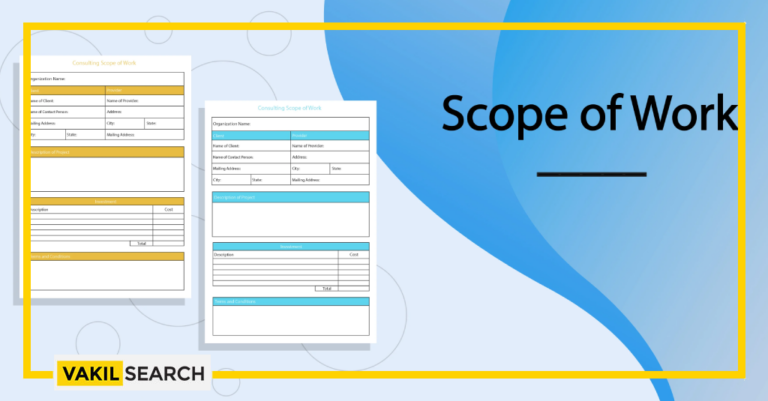Discover the essentials of creating a powerful Statement of Work (SOW) to define project scope, deliverables, timelines, and more.
Creating a well-organised Statement of Work (SOW) is crucial for showcasing your agency’s value as a partner. This article explores the essentials to include in an SOW to establish guidelines, set expectations, and highlight your agency’s unique value proposition.
What’s a Statement of Work (SOW)?
A Statement of Work (SOW) is a document that outlines a project’s requirements, including the scope of work, deliverables, timelines, payment terms, and other pertinent details. It serves as a crucial agreement that defines the customer-business relationship, sets expectations, and offers protection in case of disputes.
What Should You Include in a Statement of Work?
While each SOW is unique to the project it represents, there are seven essential elements commonly found in most SOWs:
Scope of Work
Clearly define what tasks will be performed and highlight the benefits your agency brings to the project. Make your value proposition evident to the client.
Deliverables
Establish a two-way flow of deliverables, including key milestones and deadlines. Collaborative partnerships are crucial for meeting deliverables.
Timeline and Resources
Include a detailed project timeline and specify required resources, tools, and project location.
Payment Terms
Be transparent about finances by creating a billing plan with clear payment terms, due dates, and methods. Avoid hidden terms to build trust.
Client Services
Specify who the client will interact with and through which communication channels. Clear communication is vital for a successful relationship.
Changes
Acknowledge that changes may occur during the project, but establish guidelines for handling scope creep and ensure open communication about changes.
Terms and Conditions
Include legal information such as contract termination, invoicing agreements, damages, and other relevant legal matters.
What is the Purpose of a Statement of Work (SOW)?
An effective SOW aligns project goals with a roadmap for achieving them. It defines measurable project objectives and sets expectations, including workflow structure, feedback processes, and deliverable deadlines. This clarity reduces uncertainty and establishes a structured approach to projects.
Types of Statement of Work
There are three main types of SOWs:
Design/Detail SOW
This detailed SOW provides a breakdown of project goals, tasks, and steps required to achieve them. It often includes style guides, best practices, and materials necessary for tangible project outcomes.
Level of Effort SOW
Ideal for contractors working on an hourly basis, this SOW outlines expectations for services such as delivery or skilled labour. It may be more general in nature.
Performance SOW
Focusing on project completion and satisfaction metrics, this SOW defines success criteria without delving into the specifics of how the work is done. Contractors have more control over the process as long as the end product aligns with the contract.
Creating a comprehensive SOW tailored to each project is essential for establishing clear expectations, fostering collaboration, and ensuring successful project outcomes.
Key Elements of a Procurement Statement of Work
Project Objectives
The project’s goal and purpose are stated in its objectives. These objectives guide the procurement process and help achieve the project’s desired outcomes. Clear and specific project objectives are important for coordinating procurement and ensuring successful project completion.
Scope of Work
The scope of work defines the project’s limits and size. It explains what’s included and not included in the project, making the parties involved understand their expectations and responsibilities. To avoid disputes and ensure that the project is completed on time and within budget, having a clear scope of work is crucial.
Location of Work
The physical place or region where the project will be executed is specified by the location of the work. The location of the project site, the area, or the nation where the work will be done can be included. Understanding logistics, transportation, and any local laws or requirements that may have an impact on how the project is carried out depends on this information.
Tasks
The tasks section describes the activities and duties needed to complete the project. It has a list of tasks with descriptions, deadlines, and milestones. Clear and short task descriptions help everyone understand the work to be done, avoiding confusion and ensuring efficient project execution.
Project Deliverables
The project deliverables section lists the things the project is supposed to achieve. It has a detailed list of those things, their descriptions, and any quality standards that they should meet. Having clear and measurable deliverables helps to manage and control the project effectively.
Schedule
The schedule shows when the project starts and ends, as well as important dates and deadlines. This makes sure everyone knows the timeline and helps finish the project on time. It also helps track progress and find any problems that come up.
Testing and Standards
The testing and standards section tells us how to test and what quality to aim for. We need to follow the testing methods, protocols, and standards mentioned here. This section is very important to make sure that the project meets the right quality and that the deliverables are useful.
Definition of Success
The definition of success section outlines the criteria that will be used to determine whether the project is successful or not. It includes any performance indicators,
metrics, or benchmarks that will be used to evaluate the success of the project. This section helps to establish clear expectations and provides a basis for measuring the performance and effectiveness of the project against the defined criteria.
Project Requirements
The project requirements section shows what’s needed to finish the project well. It includes technical details and design rules that are crucial for success. This section helps everyone understand what’s required and what standards to follow.
Payment Terms
The payment terms section explains the project’s financial aspects, such as the payment schedule, invoicing procedures, and other financial terms. It provides details about the payment amounts, due dates, and penalties or incentives related to the payment process. Having clear payment terms prevents misunderstandings or disputes and guarantees smooth payment transactions.
Sign-off
The sign-off section tells how to get approval from everyone in the project. It says who needs to sign and what papers are needed. It also says how long it will take to get approval. This section makes sure everyone agrees and approves the project results, which means the project is done well.
When to Use Statement of Work Contract
Procurement of Goods or Services:
A procurement statement of work is like a contract. It helps you say exactly what you need, what you’ll get, how much you’ll pay, and other important details when you buy things or services from someone else. This makes sure everyone knows what to expect and helps things go smoothly and quickly.
Outsourcing Projects:
When you outsource projects to external vendors or contractors, you can use a procurement statement of work as a contract. This contract defines the scope of work, project objectives, deliverables, timeline, and other key elements of the project. Using this contract helps to establish a formal agreement between the parties and provides a basis for effective project management and control.
Collaborative Projects:
When working with many groups on a project, you can use a procurement statement of work as a contract. It lists everyone’s duties, what they should do, and other important information. This helps everyone know what they need to do and prevents problems.
Complex Projects:
When undertaking complex projects that require a formal agreement between the parties involved, a procurement statement of work can be used as a contract to define the project scope, objectives, requirements, and other critical details. This helps to establish a formal understanding between the parties and provides a reference for managing the complexities of the project.
High-value Projects:
When dealing with high-value projects that involve significant financial investments, a procurement statement of work can be used as a contract to outline the payment terms, milestones, and other financial aspects of the project. This helps to ensure that the financial transactions are conducted as per the agreed-upon terms and conditions and minimises any potential disputes or issues related to payments.
Conclusion
To clarify all the queries, you can contact the Vakilsearch experts and we will assist you with the same.
FAQs:
Can a statement of work be used as a contract?
Yes, a procurement statement of work can be used as a contract to outline the key elements of a project, establish expectations, and define the rights and responsibilities of the parties involved.
What are the key elements of a procurement statement of work?
The key elements of a procurement statement of work include project objectives, the scope of work, location of work, tasks, deliverables, schedule, testing and standards, project requirements, payment terms, and sign-off.
Why is it important to use a statement of work as a contract?
Using a procurement statement of work as a contract provides clarity, legal protection, project management, and risk mitigation, and promotes professionalism and accountability in the procurement process.
How can a statement of work help in mitigating risks?
A statement of work helps mitigate risks. It defines the scope of work, project objectives, and requirements. It includes provisions for handling risks and liabilities. It minimizes potential legal or financial risks for the parties involved.
Also Read:










